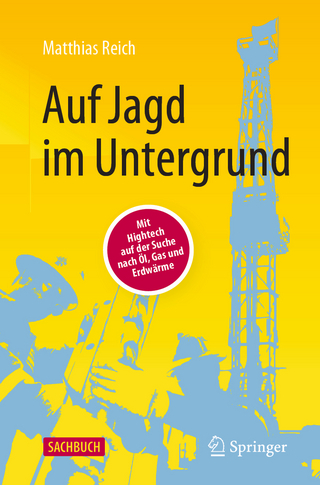
The Global Cryosphere
Cambridge University Press (Verlag)
978-0-521-15685-1 (ISBN)
This is the first textbook to address all the components of the Earth's cryosphere – all forms of snow and ice, both terrestrial and marine. It provides a concise but comprehensive summary of snow cover, glaciers, ice sheets, lake and river ice, permafrost, sea ice and icebergs – their past history and projected future state. It is designed for courses at upper undergraduate and graduate level in environmental science, geography, geology, glaciology, hydrology, water resource engineering and ocean sciences. It also provides a superb up-to-date summary for researchers of the cryosphere. The book includes an extensive bibliography, numerous figures and color plates, thematic boxes on selected topics and a glossary. The book builds on courses taught by the authors for many decades at the University of Colorado and the University of Alberta. Whilst there are many existing texts on individual components of the cryosphere, no other textbook covers the whole cryosphere.
Roger Barry is Director of the World Data Center for Glaciology, a Fellow of the Cooperative Institute for Research in Environmental Sciences and a Distinguished Professor of Geography at the University of Colorado, Boulder. He served as Director of the National Snow and Ice Data Center from 1981–2008. His teaching and research has been in climate change, arctic and mountain climates, and snow and ice processes. He has published 20 textbooks, more than 200 articles and supervised 55 graduate students. He was co-Vice Chair of the Climate and Cryosphere Project of the World Climate Research Programme from 2000–2005. Roger was a Guggenheim Fellow (1982–1983) and a Fulbright Teaching Fellow (Moscow, 2001). He is a Fellow of the American Geophysical Union and a Foreign Member of the Russian Academy of Natural Sciences. He is a winner of the Goldthwait Polar Medal (2006); the Founder's Medal of the Royal Geographical Society, London (2007); the F. Matthes award of the Cryospheric Specialty Group of the Association of American Geographers (2007); and the Humboldt Prize (2009–2011). He shared the Nobel Peace Prize with other team members of the Intergovernmental Panel on Climate Change (2007). He has been a Visiting Professor in Australia (1975), France (2004), Germany (1994, 2009, 2010), Japan (1983), New Zealand (1986), Russia (2001), Switzerland (1983, 1990, 1997) and the United Kingdom (1997). He is fluent in French, German and Russian. Thian Yew Gan is a Professor at the University of Alberta, Edmonton, and a Fellow of the American Society of Civil Engineers. His teaching and research has been in snow hydrology, remote sensing, hydrologic modeling, hydroclimatology, data analysis, climate change impact on hydrologic processes, and water resources management and planning. Thian has supervised 30 graduate students and published over 60 refereed papers in various international journals of the American Geophysical Union, American Meteorological Society, Royal Meteorological Society, Elsevier Science, the American Society of Civil Engineers and others. He has been a Visiting Professor at the Ecole Polytechnique Federale de Lausanne (EPFL) (2010); Visiting Scientist at Cemagraf, France (2009); a CIRES Visiting Fellow at the National Snow and Ice Data Center (NSIDC) of the University of Colorado, Boulder (2007, 2008); Guest University Professor at the Technical University of Munich (2006–2007); Adjunct Professor at Utah State University (1998–2005); Honorary Professor at Xian University of Technology, China (since 2004); Honorary Professor at Yangtze University, China (2010–2013); Visiting Professor at Kyoto University and JSPS Fellow, Japan (1999–2000); Guest Professor at Saga University, Japan (1999); Assistant Professor at the Asian Institute of Technology of Thailand (1989–1990); and regional hydrologist of the Indian and Northern Affairs Canada (1992–1993) on snow measurements and mapping at the Arctic.
1. Introduction; Part I. The Terrestrial Cryosphere: 2A. Snow cover; 2B. Avalanches; 3. Glaciers and ice caps; 4. Ice sheets; 5. Seasonally frozen ground and permafrost; 6. Freshwater ice: lakes, rivers and icings; Part II. The Marine Cryosphere: 7. Sea ice; 8. Ice shelves and icebergs; Part III. The Cryosphere Past and Future: 9. The cryosphere in the past; 10. The future cryosphere – impacts of global warming; Part IV. Applications: 11. Applications of snow and ice research; Glossary; References; Index.
| Erscheint lt. Verlag | 11.8.2011 |
|---|---|
| Zusatzinfo | 24 Tables, black and white; 42 Halftones, unspecified; 46 Halftones, color |
| Verlagsort | Cambridge |
| Sprache | englisch |
| Maße | 189 x 245 mm |
| Gewicht | 1080 g |
| Themenwelt | Naturwissenschaften ► Geowissenschaften ► Geologie |
| Naturwissenschaften ► Geowissenschaften ► Hydrologie / Ozeanografie | |
| Naturwissenschaften ► Geowissenschaften ► Meteorologie / Klimatologie | |
| ISBN-10 | 0-521-15685-8 / 0521156858 |
| ISBN-13 | 978-0-521-15685-1 / 9780521156851 |
| Zustand | Neuware |
| Haben Sie eine Frage zum Produkt? |
aus dem Bereich


